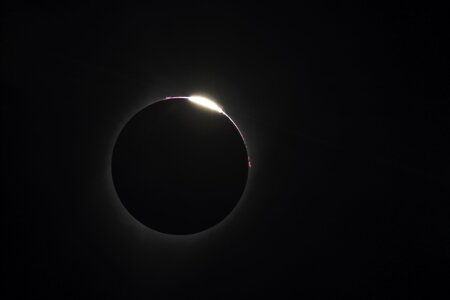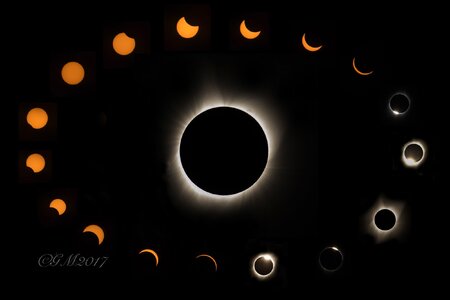Pro Member
- Joined
- Mar 25, 2021
- Posts
- 86
- Likes Received
- 60
- Points
- 18
- Name
- Justice C. Bigler
- City/State
- Chouteau, Oklahoma
The next full solar eclipse (in the US) is coming up on April 8th.
The family and I drove up to Missouri to experience totality and it was one of the most amazing events I've ever experienced. But I didn't get any good photos as I didn't really know what I was doing. This will be the last one to cover the continental US for 20 years or so. So I want to make sure to get some good photos this time.
I've got a Canon EOS R6 mkII and an EOS RP. (Also have a Black Magic PCC4K but I'll be using that for video of the event rather than the actual eclipse).
Lenses that I have are: RF 70-200 f/4, RF 24-70 f/2.8, RF 24-105 f/4, RF 35mm f/1.8, RF 50mm f/1.8, and the RF16mm f/2.8.
Not a lot of reach there. I'm going to have to either rent a longer telephoto or buy something.
Will the RF100-400 f/5.6-8 provide enough zoom for a good eclipse aroura shots? I assume that the slower aperture won't be such an issue for this type of photography, correct? Should I also get a 1.4x or 2x teleconverter to use with this lens? Or Should I try to rent the RF 100-500 f/4.5-7.1?
I want to get a good totality picture with the aurora, probably with the R6 mkII and the longer zoom lens. And then I want to get a good wider landscape with sequential photos for compositing afterwards with a neat foreground which I thought I would use my RP for. I figure the RP would lend itself to cropping a bit more since it has a few more megapixels than the R6 mkII. Thought maybe I would use the RF70-200 on the RP with the 1.6 crop.
And then there's the issue of powering the cameras for extended periods of time. I've got the battery grip for the R6 mkII. I also have AC adapters, but I would need to find a long lasting battery to plug them into. I have a 95Wh 6600mAh V-Mount battery but I was planning to use that for my BM PCC4K, and an Anker 26000 87Wh power bank battery.
Thoughts?
The family and I drove up to Missouri to experience totality and it was one of the most amazing events I've ever experienced. But I didn't get any good photos as I didn't really know what I was doing. This will be the last one to cover the continental US for 20 years or so. So I want to make sure to get some good photos this time.
I've got a Canon EOS R6 mkII and an EOS RP. (Also have a Black Magic PCC4K but I'll be using that for video of the event rather than the actual eclipse).
Lenses that I have are: RF 70-200 f/4, RF 24-70 f/2.8, RF 24-105 f/4, RF 35mm f/1.8, RF 50mm f/1.8, and the RF16mm f/2.8.
Not a lot of reach there. I'm going to have to either rent a longer telephoto or buy something.
Will the RF100-400 f/5.6-8 provide enough zoom for a good eclipse aroura shots? I assume that the slower aperture won't be such an issue for this type of photography, correct? Should I also get a 1.4x or 2x teleconverter to use with this lens? Or Should I try to rent the RF 100-500 f/4.5-7.1?
I want to get a good totality picture with the aurora, probably with the R6 mkII and the longer zoom lens. And then I want to get a good wider landscape with sequential photos for compositing afterwards with a neat foreground which I thought I would use my RP for. I figure the RP would lend itself to cropping a bit more since it has a few more megapixels than the R6 mkII. Thought maybe I would use the RF70-200 on the RP with the 1.6 crop.
And then there's the issue of powering the cameras for extended periods of time. I've got the battery grip for the R6 mkII. I also have AC adapters, but I would need to find a long lasting battery to plug them into. I have a 95Wh 6600mAh V-Mount battery but I was planning to use that for my BM PCC4K, and an Anker 26000 87Wh power bank battery.
Thoughts?



